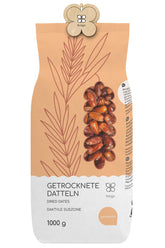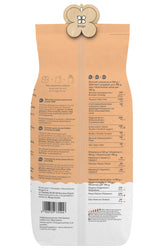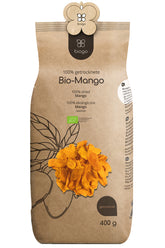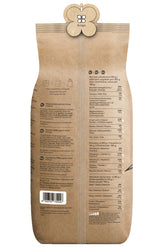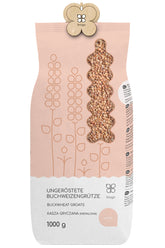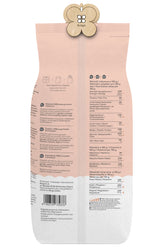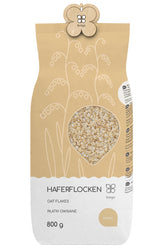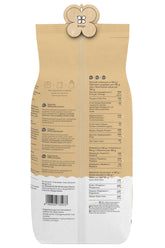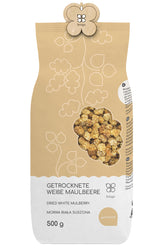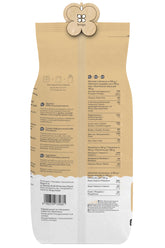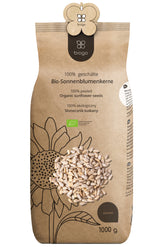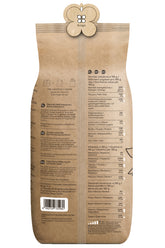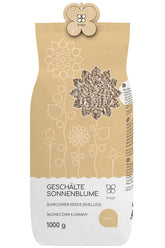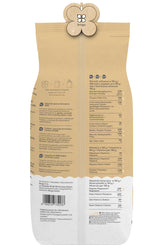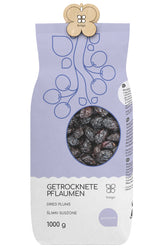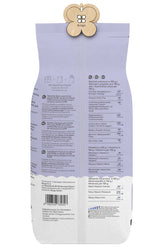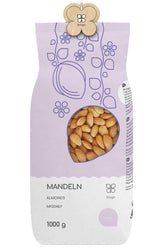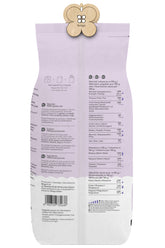In the world of healthy eating and sustainable lifestyles, ghee is gaining increasing popularity. Many people are discovering the diverse benefits of this traditional clarified butter and are increasingly using it as a replacement for conventional butter. But what exactly is the difference between ghee and butter? What advantages does ghee offer and how can it be used in the kitchen? In this blog post, we take a closer look at the differences, pros and cons, and uses of ghee compared to butter.
What is ghee and how does it differ from butter?
Ghee is a traditional preparation of clarified butter that originated in Indian cuisine. To make ghee, butter is first heated until the water completely evaporates and the milk solids remain at the bottom of the vessel. The clear, golden-yellow liquid is then poured off - this is the finished ghee.
Compared to conventional butter, ghee has some crucial differences:
- Fat Composition: Ghee consists mainly of saturated fatty acids, while butter has a higher proportion of unsaturated fatty acids.
- Smoke Point: The smoke point of ghee is about 250-260°C, which is significantly higher than butter's 150°C. This makes ghee better suited for frying and baking at high temperatures.
- Shelf Life: Due to its lower water content and the removal of milk solids, ghee is significantly more durable than butter. It can be stored at room temperature for several months.
- Lactose-Free: During the production process, the lactose components are removed from the butter, making ghee suitable for those with lactose intolerance.
Advantages of Ghee Over Butter
In addition to the structural differences mentioned, ghee also offers several health benefits compared to conventional butter:
Better Digestibility
Due to its lactose-free nature and lower milk protein content, many people tolerate ghee better than butter. Particularly for those with lactose intolerance or milk allergies, ghee can be a good alternative.
Positive Effect on Cholesterol Levels
Studies show that consuming ghee can increase HDL cholesterol (the "good" cholesterol) and lower LDL cholesterol (the "bad" cholesterol). This means ghee can contribute positively to heart health.
Antioxidant Properties
Ghee contains natural antioxidants like vitamins A and E, which neutralize free radicals in the body and thus protect against oxidative stress.
Digestive Support
Ghee is said to promote digestion and nutrient absorption in the body. Some studies suggest that ghee can positively influence gut flora and reduce inflammation in the digestive tract.
Versatile Usability
Thanks to its high smoke point, ghee is ideal for frying, baking, and cooking at high temperatures without burning or developing an unpleasant taste.
How can ghee be used in the kitchen?
Ghee can be used in a variety of ways in the kitchen and is an excellent butter substitute for a wide range of dishes:
Frying and Baking
Due to its high smoke point, ghee is perfectly suited for frying meat, fish, or vegetables at high temperatures. It can also be used for baking cakes, cookies, or bread.
Preparation of sauces and dips
Ghee gives sauces, dips, and dressings a creamy consistency and a slightly nutty flavor.
Refining beverages
Some people also add ghee to their coffee, tea, or smoothies to round off the taste and supply the body with healthy fats.
Preparation of Ayurvedic dishes
In traditional Indian cuisine, ghee is an indispensable component of many dishes. It not only adds flavor to the food but is also said to promote digestion and health.
Use as a bread spread
Spread pure on bread or pastries, ghee develops a delicious, creamy taste.
Production of body care products
Ghee is also used in natural cosmetics, for example as a base for ointments, creams, or lip care products.
Making ghee yourself
Those who want to make ghee themselves only need high-quality butter and some time. The production process is extremely simple:
- Melt butter in a pot over medium heat.
- Once the butter starts to bubble, reduce the heat and let it simmer until the liquid is clear and the milk solids are visible at the bottom of the pot.
- Carefully pour off the clear, golden-yellow liquid and store it in a clean jar or tin.
- The residues at the bottom can be used as clarified butter.
Homemade ghee can be stored for several months at room temperature, making it a practical and durable alternative to conventional butter.
Conclusion: Ghee - a versatile and healthy butter substitute
Ghee offers some decisive advantages compared to butter: It's lactose-free, more durable, and can be heated to higher temperatures without losing quality. Additionally, ghee has positive health properties, such as potentially improving cholesterol levels and having antioxidant effects.
Whether in the pan, oven, or as a bread spread - ghee is versatile in the kitchen and an excellent, natural butter substitute for those seeking a healthy alternative. Those who want to make ghee themselves can do so with simple means and little effort.

